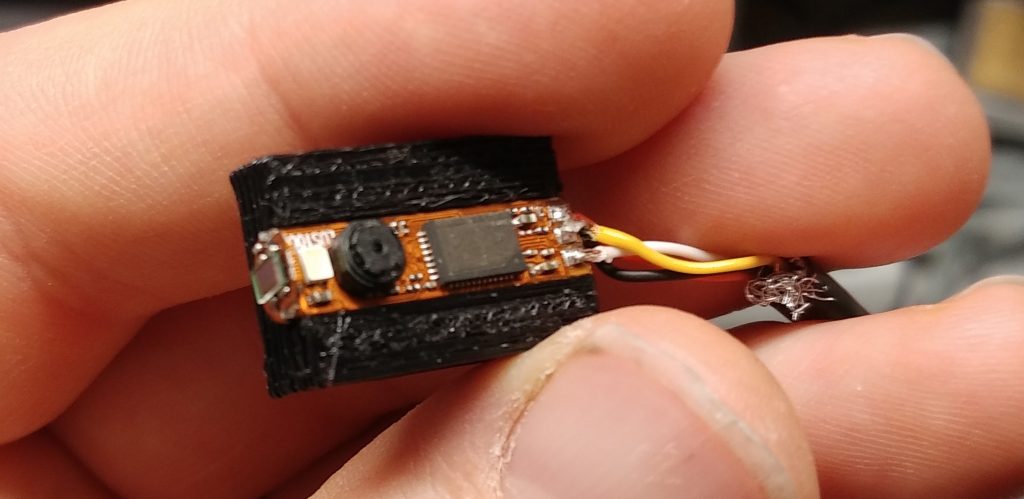We keep coming back to the basic fact that we need to know what the eyeballs are doing. This requires an eye tracker which does what we want (particularly, with a software API which doesn’t assume both eyes are coordinating in the usual way!) at a price we can afford. The corollary to this is – we’re going to have to do it ourselves.
Tobii style eye trackers are massively over powered and overpriced for what we are attempting, while we suspect it will take longer to get a collaboration going with PupilLabs (there are issues with their mobile software stack, API, licensing, and their choice of cameras) than we will need to roll our own solution.
In previous posts I introduced the PCB we found, which integrates two web cams as a single output, and mentioned that we’ll need to have it modified.
First, the cable length between the two cameras:
- The average adult’s PD is between 54-74 mm; kids‘ are between 43-58 mm.
- We therefore need to span between 43 and say 75mm.
- We also need to be able to route that cable around the nose!
- We need a way of containing loops (for shorter lengths) that don’t damage the cable.
- We move the second camera onto its own PCB (b). That PCB serves two purposes, to hold the IR LEDs and provide a mechanical surface to be held in place reliably.
- We make the length of the cable some 12cm long (make a mockup to check necessary lengths with Moritz) where any excess can be hidden in the cavity under the eye piece “shelf”.
Looking more closely at the PCB:
We need to find a new layout which isn’t so radically different from the existing one. If it is too different, it is likely that the manufacturers charge us a fortune for a redesign, but we also *must* reach a point where we have at least an “L” shaped positional layout for IR LEDs (so we can judge pupil movement distances and orientations) plus (if it can be done without introducing another manufacturing step) a way of reliably physically fixing the unit. We also need to be careful to specify a slightly longer piece of cable without shielding so we can run the cabling up inside the holder effectively.
I consider our first step to be producing a simple physical prototype where we can temporarily affix some IR Leds and see how it performs/could be fixed to the headset. The next question is – should this prototype extend the existing actual PCB so we can experiment with the real unit, or just model the desired physical dimensions of the unit? Well, both are probably necessary, but counter intuitively it may be best to start with a quickly printable harness where we place our IR LEDS.. which we then separate out in a separate step into the new PCB design and the holder design. Let’s have a go at this!

So here’s a first super simple stab at it. The slot allows us to place the Camera PCB into it with a dab of hot glue (or just a snug fit), where we can also really simply modify the “holderFaceAngle” variable to find a good angle that allows the eyes to be monitored. Next we can try fixing IR LEDs to the top/bottom strip in different positions to see what works best.
Where could we go from here? Well, the existing PCB is actually on a flexible bases wrapped around a metal block for heat dissipation. I’ve set this up so that the manufacturer can add “ears” at the top and the bottom for the new IR LEDs. The question is whether or not they would extend the metal base (it might be a standardised part) . Obviously, it would be best if they were able to extend the metal base as we’d have the most reliable IR positioning .We’d then only have to increase the size of the slot to accommodate the new PCB. The second advantage would be that we could leave an area of naked metal at the rear of the unit, against which we could press the surface of the mount. This (when gluing for instance) would allow us to be sure the unit is really positioned flush (at the correct angle) with the holder. It might really come down to something this simple.
We would then extend the base of the holder with some feet that extend through pre-cut holes in the camera core (as in the previous instance) so that (with the help of a mounting tool) a monteur can be sure that the holder is correctly mounted each and every time.

